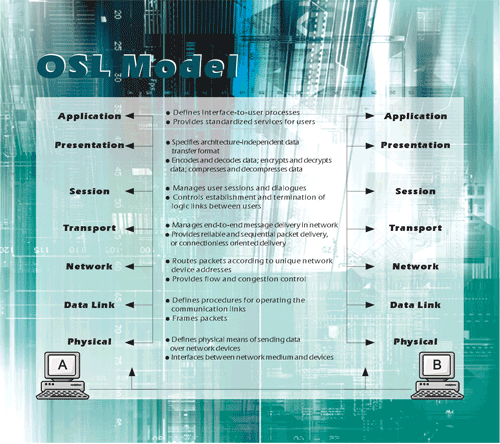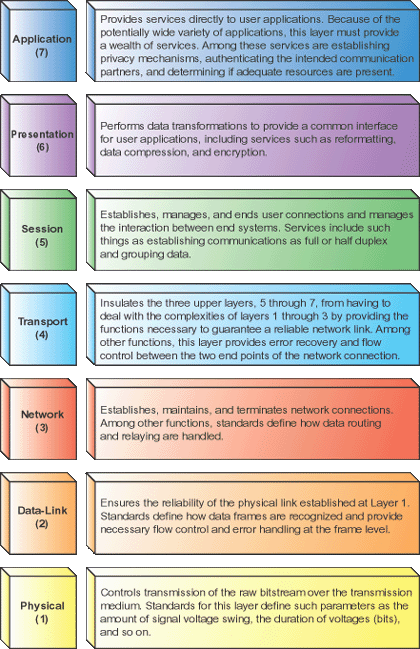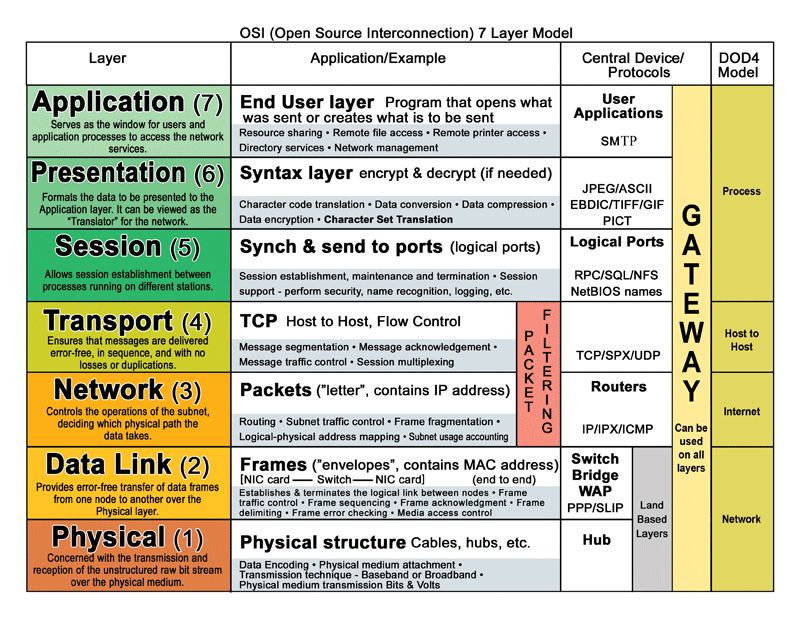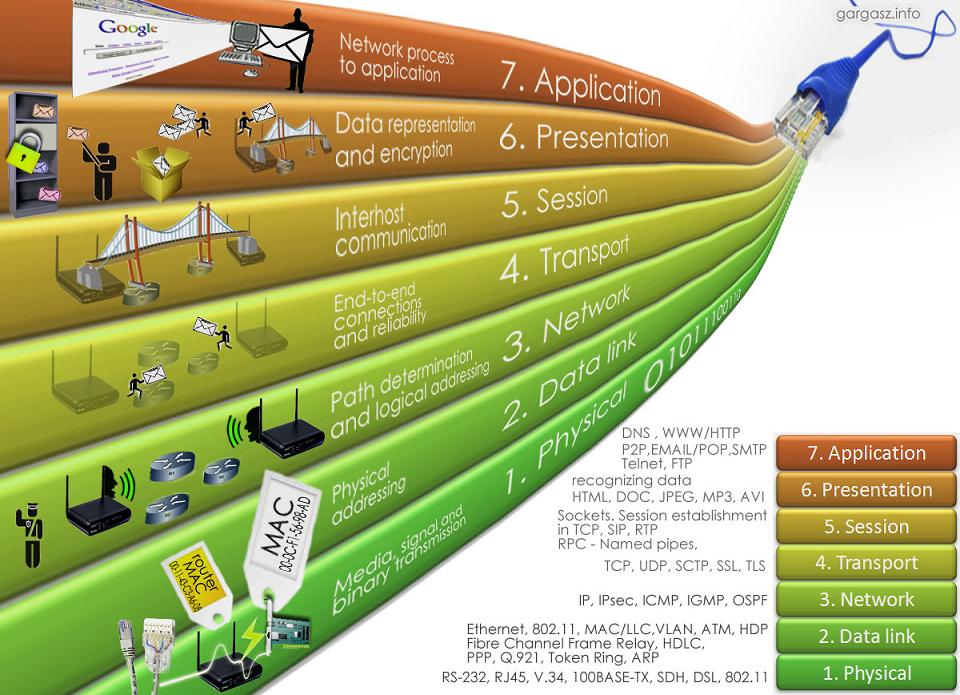Lists the seven layers of the OSI model and significant aspects of each layer
- Provides an interface between a host’s communication software and any necessary external applications.
- Evaluates what resources are necessary and available resources for communication between two devices.
- Synchronizes client/server applications.
- Provides error control and data integrity between applications.
- Provides system-independent processes to a host.
Presentation Layer
- Presents data to the application layer.
- Acts as a data format translator.
- Handles the structuring of data and negotiating data transfer syntax to Layer 7.
- Processes involved include data encryption, decryption, compression, and
- decompression.’
Session Layer
- Handles dialog control among devices.
- Determines the beginning, middle, and end of a session or conversation that
- occurs between applications (intermediary).
Transport Layer
- Manages end-to-end connections and data delivery between two hosts.
- Segments and reassembles data.
- Provides transparent data transfer by hiding details of the transmission from the upper layers.
Network Layer
- Determines best path for packet delivery across the network.
- Determines logical addressing, which can identify the destination of a packet or datagram.
- Uses data packets (IP, IPX) and route update packets (RIP, EIGRP, and so on).
- Uses routed protocols IP, IPX, and AppleTalk DDP.
- Devices include routers and Layer 3 switches.
Data Link Layer
- Ensures reliable data transfer from the Network layer to the Physical layer.
- Oversees physical or hardware addressing.
- Formats packets into a frame.
- Provides error notification.
- Devices include bridges and Layer 2 switches.
Physical Layer
- Moves bits between nodes.
- Assists with the activation, maintenance, and deactivation of physical connectivity
- between devices.
- Devices include hubs and repeaters.
Download OSI Download Model Chart
CCNA Exam – OSI & TCP/IP Model
Cisco CCNA Notes




